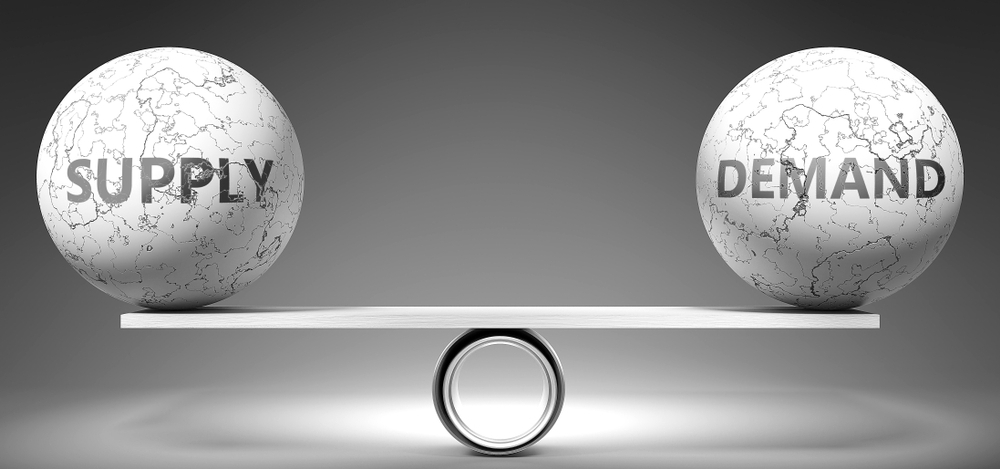Introduction
In our daily lives, we constantly make decisions based on the perceived availability and desirability of goods, services, and resources. The mental model of Demand and Supply plays a crucial role in shaping these decisions. Originating from the field of economics, Demand and Supply is a fundamental concept that explains the relationship between the desires of consumers (demand) and the availability of products or services (supply). Understanding this mental model is essential as it influences our decision-making processes, whether in personal life choices, business scenarios, or public policy-making. This blog post will delve into the concept of Demand and Supply, explore its psychological underpinnings, provide practical examples, and offer strategies for avoiding its pitfalls.
Defining Demand and Supply
Demand refers to the quantity of a particular product or service that consumers are willing and able to purchase at a given price within a specific time period. On the other hand, supply represents the quantity of goods or services that producers are willing and able to provide to the market at a given price. The relationship between demand and supply is a fundamental principle of economics, determining the equilibrium price and quantity in a market.
Relevance in Decision-Making Processes
The Demand and Supply mental model is anchored in human psychology, reflecting our inherent desires and perceptions. It plays a crucial role in shaping decision-making processes as individuals and businesses respond to perceived shifts in demand and supply conditions. By understanding this model, we can make more informed decisions and avoid falling into the traps of irrationality and poor judgment.
Examples of Demand and Supply in Various Contexts
- Personal Life Decisions: Imagine a scenario where a person is searching for a new apartment to rent. As demand for housing increases in a particular city due to population growth, the supply of available apartments becomes limited. Consequently, landlords can charge higher rents, exploiting the high demand. In this case, individuals who succumb to the demand and supply dynamics may be driven to pay exorbitant prices for subpar accommodations, neglecting other crucial factors such as location, amenities, and their own budget constraints.
- Business Scenarios: Consider a fashion retailer aiming to maximize profits during the holiday season. Anticipating a surge in demand for winter clothing, the retailer decides to stock up on winter coats. However, unseasonably warm weather leads to a decrease in demand for coats, leaving the retailer with excess inventory. Here, the business fell prey to demand and supply fallacy by overestimating the demand and failing to adapt to changing market conditions.
- Public Policy-Making: Governments often implement policies to control the supply and demand of certain goods or services. For instance, imposing a tax on sugary beverages aims to reduce consumption and improve public health. However, when demand for these beverages remains relatively inelastic, consumers may continue to purchase them despite the increased price. In this case, policymakers misjudged the extent to which demand would be affected by the price change, leading to unintended consequences.
Psychological Biases and Underpinnings
Demand and Supply are influenced by various psychological biases. One such bias is anchoring, where individuals rely heavily on the first piece of information they encounter. In the context of demand and supply, people often anchor their expectations of price and availability based on initial cues, leading to potential misjudgment.
Another bias is availability heuristic, where individuals rely on readily available information when making judgments. In the case of demand and supply, people might overestimate the demand for a product or service based on recent media coverage, social media trends, or personal anecdotes, without considering the broader market conditions.
Confirmation bias also plays a role, as individuals tend to seek out information that confirms their existing beliefs or expectations. This bias can distort perceptions of demand and supply, as people selectively focus on evidence that supports their preconceived notions, disregarding contradictory information.
Identifying and Avoiding Demand and Supply Fallacies
To avoid succumbing to Demand and Supply fallacies, it is important to recognize the biases that can cloud judgment. Here are some strategies and tips for more objective decision-making:
- Seek Diverse Perspectives: Engage with a wide range of sources, opinions, and data to challenge preconceived notions. By considering multiple viewpoints, you can gain a more comprehensive understanding of demand and supply dynamics.
- Conduct Research: Invest time in gathering relevant information and data before making decisions. Look beyond anecdotal evidence and rely on well-established research, economic indicators, and market analysis to gauge actual demand and supply conditions.
- Consider Long-Term Trends: Recognize that demand and supply are not static, and they can fluctuate over time. Consider the broader economic, social, and technological trends that might influence future demand and supply dynamics.
- Utilize Decision-Making Frameworks: Adopt decision-making frameworks, such as cost-benefit analysis or scenario planning, to evaluate the potential outcomes of different decisions. These frameworks provide a structured approach to consider a range of factors beyond demand and supply alone.
Conclusion
The Demand and Supply mental model is deeply ingrained in our decision-making processes. By understanding its psychological underpinnings, recognizing biases, and employing strategies for objective decision-making, we can navigate the complexities of demand and supply more effectively. Awareness and active avoidance of the fallacies associated with this mental model can help us make rational decisions that align with our best interests. Whether in personal life, business, or public policy, the ability to discern the true relationship between demand and supply is invaluable for achieving optimal outcomes.
